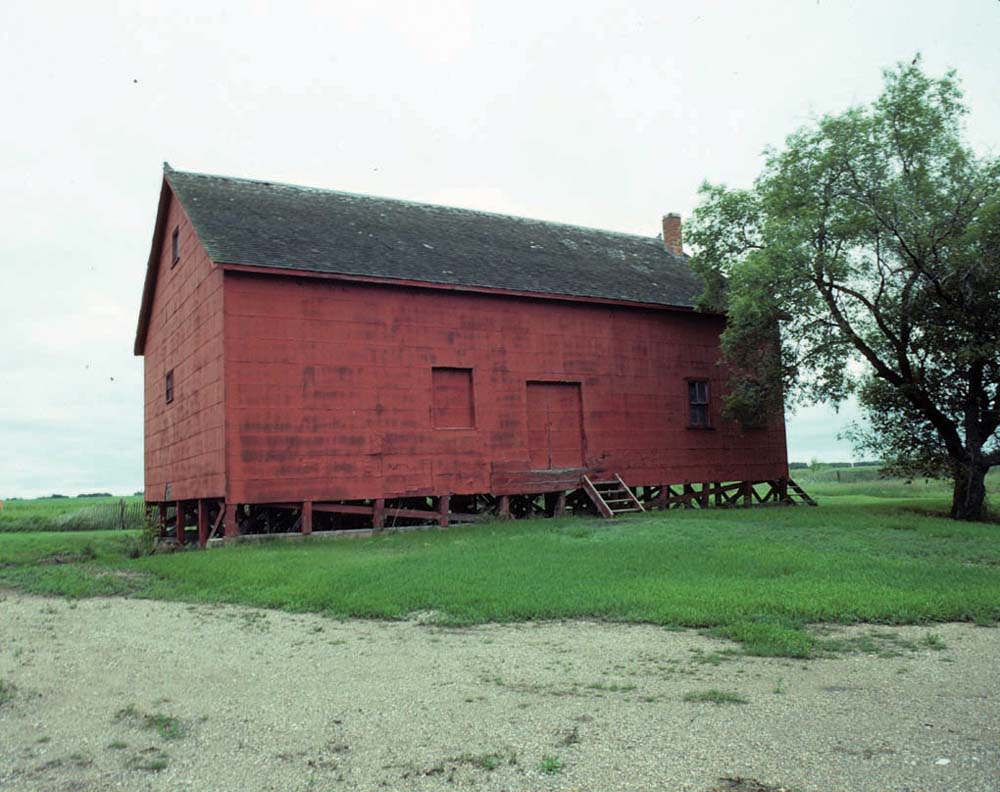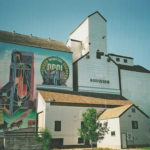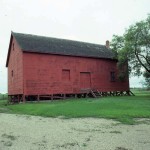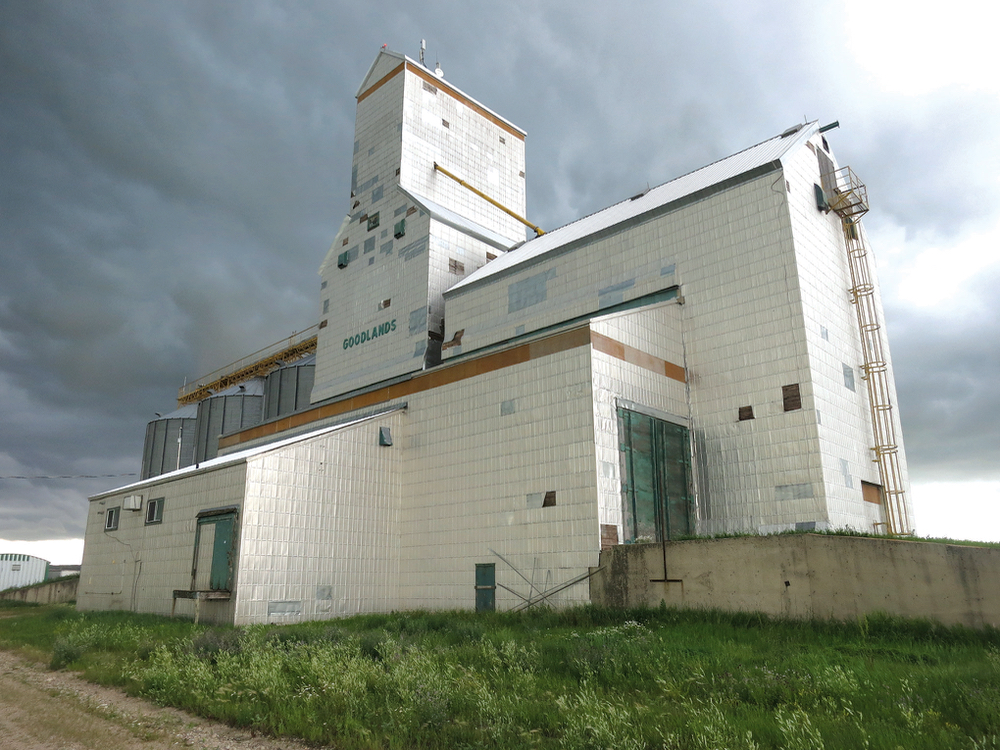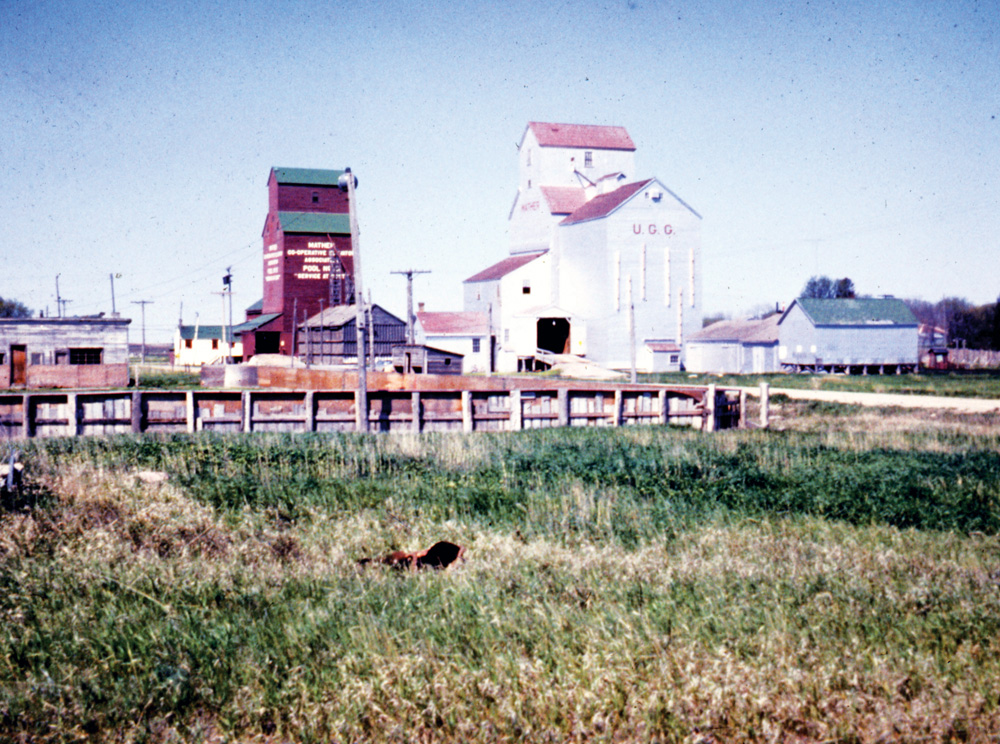
thumbnail_Whitemouth UGG
This pair of photos illustrates the 25,000-bushel UGG elevator at Whitemouth, in 1962 before it was repainted with more modern corporate colours, and in 1966 after its paint job and construction of a 34,000-bushel annex. Despite local opposition, the elevator was closed in July 1979.
Photo: UGG Engineering Dept. (Glen Dickson)
Mariapolis UGG_cmyk.jpg
Around 1986, two small elevators in Mariapolis were replaced by a single large elevator just outside of town. The CNR sold the rail line to the Southern Manitoba Railway which subsequently abandoned it and salvaged the track.
Photo: UGG Engineering Dept. (Glenn Dickson), 1968
Boissevain Pool_cmyk.jpg
A Pool elevator and annex on South Railway Street in Boissevain features a large, colourful mural painted in the 1990s by artists Stephen Jackson and Gus Froese.
Photo: Mike Lisowski, 2001
Tilston Pool_cmyk.jpg
A grain elevator and annex in Tilston, in the Municipality of Two Borders, was once operated by the Ogilvie Milling Company, known for its Five Roses brand of flour whose name still appears on the sides of the building. In 1959, it was taken over by Manitoba Pool as its "B" elevator. The "A" elevator still stands nearby.
Photo: Bernie Freeman (2008)
Brookdale warehouse_cmyk1.jpg
A small unassuming building in Brookdale is believed to be one of only two surviving examples of a flat grain warehouse in Manitoba. Before the advent of tall elevators, warehouses such as these were used to store sacks of grain. Constructed in 1902, it was later acquired by Manitoba Pool Elevators around the time that it constructed an elevator nearby. When a local farmer purchased the elevator after it closed in 1978, he purchased this warehouse too.
Photo: Manitoba Historic Resources Branch, July 1993
In the 1950s, there were over 700 grain elevators in Manitoba. Today, there are fewer than 200. You can help to preserve the legacy of these disappearing “Prairie sentinels.”
The Manitoba Historical Society (MHS) is gathering information about all elevators that ever stood in Manitoba, regardless of their present status. Collaborating with the Manitoba Co-operator it is supplying these images of a grain elevator each week in hopes readers will be able to tell the society more about it, or any other elevator they know of.
MHS Gordon Goldsborough webmaster and Journal editor has developed a website to post your replies to a series of questions about elevators. The MHS is interested in all grain elevators that have served the farm community.
Read Also
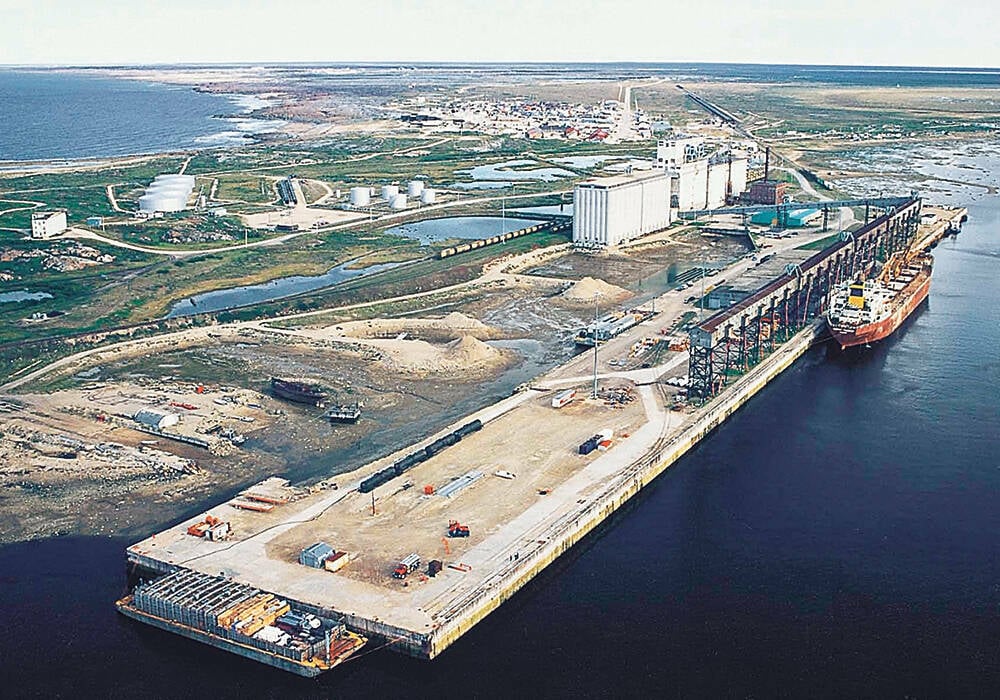
Port of Churchill revamp gathers pace
Canada’s Port of Churchill Plus update plan hopes to expand trade, including agriculture trade, at Manitoba’s Arctic sea port
Your contributions will help gather historical information such as present status of elevators, names of companies, owners and agents, rail lines, year elevators were built — and dates when they were torn down (if applicable).
There is room on the website to post personal recollections and stories related to grain elevators. The MHS presently also has only a partial list of all elevators that have been demolished. You can help by updating that list if you know of one not included on that list.
Your contributions are greatly appreciated and will help the MHS develop a comprehensive, searchable database to preserve the farm community’s collective knowledge of what was once a vast network of grain elevators across Manitoba.
Please contribute to This Old Grain Elevator website here. You will receive a response, by email or phone call, confirming that your submission was received.




